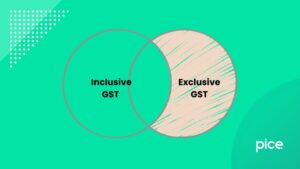Understanding GST on Printing of Examination Answer Sheets
- 13 Aug 24
- 11 mins

Understanding GST on Printing of Examination Answer Sheets
- GST Applicability on Stationery Items: Rates and HSN Codes
- Paper-Based Stationery Products and GST Rates
- GST Implications for Stationery Products Crafted from Metal
- Input Tax Credit for Stationery Under GST
- GST Schemes for Small Taxpayers: Benefits and Eligibility
- Insights from Advance Rulings on GST for Printed Educational Materials
Key Takeaways
- GST rates vary for stationery items based on their HSN codes, ranging from 5% to 18%, ensuring accurate tax application and compliance.
- Paper-based stationery products essential for education, like examination answer sheets and textbooks, are often exempt from GST to support affordability and access.
- Metal stationery items, due to their durability and higher manufacturing costs, generally attract a standard GST rate of 18%.
- Businesses can significantly reduce their costs by availing Input Tax Credit (ITC) for GST paid on purchases related to stationery items, enhancing operational efficiency.
- Small taxpayers, including stationery businesses, can benefit from simplified tax compliance and reduced tax rates under schemes like the Composition Scheme.
GST Applicability on Stationery Items: Rates and HSN Codes
The Goods and Services Tax (GST) has been a significant shift in the Indian tax framework, affecting various sectors, including the stationery industry. Stationery items encompass a wide range of products, from writing instruments to paper products, each classified under specific Harmonized System of Nomenclature (HSN) codes. These codes are crucial for determining the applicable GST rates and ensuring uniformity in taxation across the country.
Stationery items are generally classified under several HSN codes based on their nature and use. For instance, writing instruments like pens are classified under HSN code 9608, attracting a standard GST rate. On the other hand, items like adhesive tapes fall under HSN code 3919. The GST rates for stationery items can vary, typically ranging from 5% to 18%, depending on the product's classification and the council's guidelines.
Understanding the correct HSN code and corresponding GST rate is vital for businesses to ensure accurate tax filing and compliance. It also helps consumers to be aware of the tax component of the stationery items they purchase.
Paper-Based Stationery Products and GST Rates

Paper-based stationery products hold particular importance due to their widespread use in educational institutions, offices, and by individuals. This category includes items such as notebooks, examination answer sheets, and envelopes, which are essential for daily operations and academic activities.
The GST rates for paper-based stationery products are designed to reflect the essential nature of these items. For example, printed books, including printed examination answer sheets and notebooks, are exempt from GST, underlining their importance in education. However, other paper-based products not directly related to education or considered luxury items may attract a higher GST rate.
Specifically, examination answer sheets, due to their critical role in the education system, are treated favorably in the GST regime. The intent is to minimize the financial burden on educational institutions and, by extension, on students. By understanding the GST rates applicable to paper-based stationery products, stakeholders can navigate the tax implications more effectively, ensuring compliance and optimizing costs.
GST Implications for Stationery Products Crafted from Metal
Stationery products crafted from metal, such as staplers, paper clips, and geometry sets, fall into a distinct category within the GST framework. Given their durability and higher manufacturing cost, metal stationery items are often subjected to a different GST slab compared to their paper-based or plastic counterparts. These products are typically classified under specific HSN codes that reflect their metal composition, which in turn determines the applicable GST rate.
The GST rates for metal stationery items can vary, but they generally attract a standard rate, which is currently set at 18%. This rate acknowledges the long-lasting nature and higher value of metal stationery products. For businesses involved in the supply of metal stationery, understanding these GST implications is crucial for setting prices competitively while ensuring compliance with tax regulations.
💡If you want to pay your GST with Credit Card, then download Pice Business Payment App. Pice is the one stop app for all paying all your business expenses.
Input Tax Credit for Stationery Under GST
One of the cornerstone features of the GST system is the Input Tax Credit (ITC), designed to eliminate the cascading effect of taxes, thereby reducing the overall cost of goods and services. Businesses engaged in the trade or manufacture of stationery items, including both paper-based and metal products, can avail themselves of ITC. This allows them to deduct the tax paid on their purchases (inputs) from the tax to be paid on sales (output), effectively lowering the net tax liability.
To claim ITC on stationery items, businesses must ensure that their purchases are from GST-registered vendors and that they maintain accurate and comprehensive records of all transactions. This includes keeping all invoices which detail the GST paid on purchases, which can then be used to claim the credit. The eligibility for ITC extends across various types of stationery items, provided they are used for business purposes and not for personal use or exempt supplies.
By leveraging the ITC mechanism, stationery businesses can significantly reduce their input costs, enhancing operational efficiency and profitability. It's important for businesses to regularly review their GST filings and ensure they are maximizing their ITC claims within the legal framework, thereby optimizing their tax liabilities and supporting their financial health.
GST Schemes for Small Taxpayers: Benefits and Eligibility

The GST framework offers specialized schemes designed to simplify the tax compliance process for small taxpayers, making it more accessible and less burdensome. These schemes, such as the Composition Scheme, are tailored to reduce the compliance load and tax liability for small businesses, including those dealing in stationery products.
Composition Scheme: This scheme allows eligible small taxpayers to pay GST at a nominal rate, which is significantly lower than the standard rates. The scheme is applicable to businesses with an annual turnover below a specified threshold, which currently stands at INR 1.5 crore for most states and INR 75 lakhs for special category states. Under this scheme, taxpayers are relieved from the detailed record-keeping requirements and the need to file monthly returns, simplifying the tax filing process.
Businesses opting for the Composition Scheme cannot claim Input Tax Credit (ITC), and they are also restricted from making interstate supplies. This scheme is ideal for small stationery businesses that primarily operate within their local state and have a limited customer base.
Exemptions, Valuations, and GST on Educational Supplies
Educational supplies, especially those crucial for the delivery of education like textbooks, examination answer sheets, and other paper-based educational materials, enjoy certain exemptions and favorable treatment under the GST law. The aim is to make educational materials accessible and affordable, supporting the educational ecosystem.
Exemptions: Printed materials such as textbooks, maps, charts, and examination answer sheets are exempt from GST, acknowledging their essential role in education. This exemption applies regardless of the selling price, making these supplies more affordable for educational institutions and students.
Insights from Advance Rulings on GST for Printed Educational Materials
Advance rulings under the GST regime provide clarity and certainty to taxpayers regarding the tax implications of their transactions, including those related to printed educational materials. These rulings are particularly insightful for businesses involved in the production, supply, and sale of educational content, as they outline the GST treatment for various scenarios. Here are some key insights drawn from advance rulings on GST for printed educational materials:
- Classification and Applicability: Advance rulings have clarified that printed educational materials like textbooks, guidebooks, workbooks, and examination answer sheets generally fall under specific HSN codes that are exempt from GST. This classification ensures that educational materials remain accessible and affordable.
- Nature of Content Matters: The content of the printed material plays a crucial role in determining GST applicability. Materials that are purely educational and are prescribed by educational boards or institutions for course completion are typically exempt. However, supplementary materials not prescribed by an educational curriculum may attract GST.
- Customized Educational Materials: Advance rulings have addressed scenarios where educational materials are customized for specific educational institutions. Such customization does not alter the essential character of the materials as educational, and thus, they may still qualify for GST exemption, provided they are used for educational purposes.
- Digital vs. Printed Materials: In the context of the growing digitalization of education, advance rulings have also touched upon the GST treatment of digital educational materials in comparison to printed ones. While printed educational materials enjoy exemptions, digital or electronic educational resources may be treated differently under GST, highlighting the importance of the medium of dissemination.
- Input Tax Credit (ITC) Concerns: For businesses that supply both taxable and exempt educational materials, advance rulings have offered guidance on the apportionment and claim of ITC. These rulings emphasize the need for maintaining separate accounts for taxable and exempt supplies to ensure proper ITC claims.
Advance rulings serve as a valuable resource for stakeholders in the educational sector, providing legal clarity and helping businesses navigate the GST landscape more effectively. By adhering to the principles laid out in these rulings, businesses can ensure compliance, optimize their tax liabilities, and contribute to making education more accessible through affordable educational materials.


















